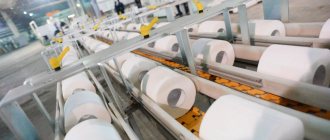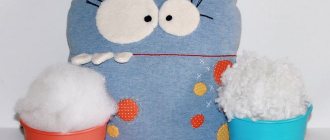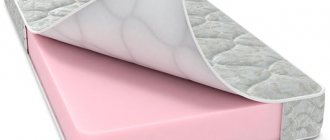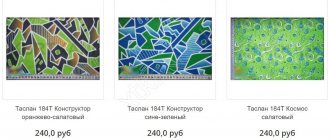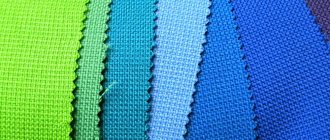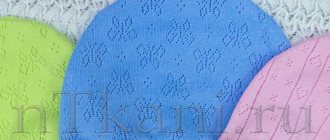What is organza
The word "organza" has several origins. It is known that the fabric was brought to Europe from the East at the end of the 18th century. Since that time, a silk spinning factory has existed in the Uzbek city of Urgench. It is assumed that the name of the fabric came from this city.
The Oxford Dictionary indicates that the name of the fabric comes from the American factory Logranza. The factory was engaged in the production of silk fabric.
Previously, only natural silk threads were used to produce organza. The material was very expensive and was available only to wealthy people.
It was difficult to process silk and obtain strong threads. The material was produced in small quantities and was used only to decorate clothes in the form of collars, cuffs, and hat decorations.
Then people learned to create artificial fibers, and making organza became easier. The material looks attractive. It is thin, transparent, and quite durable.
The fabric is smooth and slightly cool to the touch. It is tough and holds its shape well. The surface can be shiny or matte.
Modern organza consists of silk, viscose and polyester fibers. Transparency is achieved by tightly twisting the threads. This also ensures rigidity and the ability to keep its shape.
The color of the fabric is white and colored. You can make various patterns and embroidery on it. Modern technologies for applying patterns - printing and laser perforation.
Sometimes organza is confused with a veil. This fabric is softer, flows, and does not hold its shape. It is less transparent. When choosing between a veil and organza, it is better to give preference to the latter if you plan to sew a dress. Any option is suitable for curtains.
To view the fabric review:
Types of fabric
There are many varieties of matter, they differ in appearance:
- smooth, plain;
- rainbow - with vertical stripes smoothly blending into each other;
- chameleon - a special interweaving of multi-colored fibers ensures color changes depending on the light;
- with metallized threads - has a special shine;
- with gold or silver plating;
- organza flock - a material for creating accessories and interior elements, covered with a velvety-to-the-touch pattern of small fibers;
- “crash” - crushed texture;
- with embroidery;
- with perforation or printed pattern;
- jacquard - a combination of threads of different colors and thicknesses.
Floral fabric is used only for decorating bouquets. It is durable, yet thin and transparent. It can be plain or with a pattern.
View this publication on Instagram
Publication from Shtora in Kharkov (@kharkivshtory) February 14, 2021 at 7:19 PST
View this post on Instagram
Publication from LUXURY FABRICS ✨ (@tkani_barhat_) February 14, 2021 at 11:02 PST
Features and Specifications
This beautiful fabric, like many other cotton materials, began to be produced in India, and was often called “starched muslin”. For its production, the thinnest threads and ordinary plain weave were used. The resulting canvas was subjected to complex processing, which included:
- dissolving impurities using a weak acid solution;
- bleaching the fabric with soap and soda solution;
- exposing the fabric to a solution of caustic soda, which imparts rigidity to the threads and makes the texture of the fabric more compressed;
- pattern printing (traditionally silver tone);
- impregnation with adhesive finishing and final leveling of the material.
The degree of impregnation is divided into three levels:
- The hardest organdy is used for home textiles - curtains, tablecloths, lampshades.
- Various trims are made from medium-hard material - collars, jabots, frills, as well as fluffy petticoats.
- Soft fabric is used for light women's and children's clothing.
All these types of transparent natural textiles have the following properties:
- matte coating;
- dimensional stability;
- naturalness;
- good breathability;
- high hygroscopicity.
The absolute disadvantage is that this fabric wrinkles and shrinks. In addition, organdy frays very much when cut, and its threads may diverge when sewing.
Where is organza used?
Organza is a decorative festive material. Its application is quite wide. In the home interior:
- window curtains - allow light to pass through well, giving the room lightness and airiness;
- dividing the room into zones - suitable for studio apartments;
- decoration of canopies.
Organza tulle with a pattern is used to decorate rooms for celebrations and banquets. Curtains with bright eyelets give the room an elegant look.
Delightful wedding dresses are made from white organza. Colored is used in creating costumes for oriental dances, evening and stage wear. Dresses with embroidery on organza look romantic and feminine.
Festive bows for girls are made from elegant material. Design gift wrapping and flower bouquets. Needlewomen use fabric to make cards and toys.
An original interior decoration in the European style - topiary. This is an artificial tree, the crown of which is made of fabric, decorated with ribbons, beads, and lace. It is believed that this product brings happiness to the home.
To see how to sew a complex fabric product:
See how to sew a skirt from fabric:
To view DIY - fabric decorations:
Varieties of organza
A design can be applied to fabric in various ways: embroidery, printing, etching. When processing the material, modern technologies are used to create interesting effects on the surface of the fabric. These include laser cutting and perforating.
There are several types of organza fabric:
- The header is a material whose structure consists of numerous creases and cracks. This decorative effect is obtained as a result of using a special press in the fabric production process.
- “Chameleon” - the name of this material comes from the visual effect that it allows to achieve. Depending on the angle of inclination of the organza, it changes its color. This effect is achieved through the use of multi-colored warp and weft threads in the production of fabric.
- Jacquard - organza with large woven patterns.
- Sputtered - a material with shimmering particles on the surface.
- Crash - the fabric has a structure that imitates broken glass.
Thanks to the work of designers, new types of organza are gradually appearing.
How to wash and care for fabric
Organza is a capricious material when it comes to washing and ironing. It is resistant to stains, but hygiene procedures are still required periodically. Improper washing and ironing can deform the product.
Organza can be washed by hand or in a washing machine. It should be remembered that when machine washed, the fabric produces a lot of foam. It is better to use not powder, but special gel or capsules.
Clothing, especially those decorated with sequins or beads, should be washed by hand. Pre-soak in a soap solution at a water temperature of 40 degrees.
Then the item is carefully washed with stroking and rubbing movements. Do not roughly rub or twist the organza, as this will cause it to become deformed.
After washing, the product is rinsed with plenty of water. They don’t wring them out, but hang them on hangers so that all the water drains out. They can also be dried on hangers or on a horizontal surface, spread out.
Large items like organza tulle are difficult to wash by hand. When washing in an automatic machine, select the delicate cycle. Disable the spin and dry function.
Washed organza curtains can be immediately hung on the curtain. Under the influence of their own gravity, they straighten out, leaving no creases.
To turn fabric white, you can use oxygen or optical brighteners. Chlorine bleaches, like bleach, ruin things and leave yellow stains.
Snow-white fabric should not be dried in the sun, as this will turn it yellow. Any type of organza should not be dried near a heat source, as this will lead to deformation.
Iron the fabric on a delicate setting. A white cloth is placed under the item. You cannot use the steam function on the iron.
Products made from capricious fabric are recommended to be washed 3-4 times a year. Items with complex decorations should be taken to a professional dry cleaner. For machine washing, use special bags.
Careful care allows you to extend the life of the fabric and preserve its beauty.
Watch the video on how to properly wash tulle:
Properties and uses of organza
Organza curtains
Despite its delicate appearance and transparency, organza is a very durable material. The combination of silk, viscose and polyester in one fabric gives the surface of the material a special shine. However, much more often you can find completely synthetic material; it is much more affordable than with natural fibers in its composition.
Among the advantages of organza are:
- the fabric does not wrinkle or form creases;
- high wear resistance and strength, tear resistance;
- light transmittance;
- the fabric does not shrink or deform;
- shape stability (allows you to create durable folds and curvy silhouettes);
- resistance to organic solvents;
- attractive appearance;
- durability and easy maintenance.
Flaws:
- high price;
- causticity - the fabric does not fit very nicely to the body and is used on top of other materials in the creation of clothing;
- transparency also does not allow the use of organza for independent clothing models;
- low breathability;
- difficulty in processing and cutting.
Sew from organza:
- curtains (classical, Roman, Austrian and many other types) and lambrequins;
- evening dresses (trimming of dresses, blouses, skirts);
- variety costumes;
- topiary (decorative talisman trees);
- bouquet decoration;
- school bows, hair accessories;
- gift bags, bows for gift decoration.
Organza curtains cover the window with a weightless haze and will be appropriate if the view outside is attractive. Despite its transparency, the fabric reflects sunlight well and protects from prying eyes.
Features of cutting and sewing from organza
Smooth material slips and warps when cutting. To carefully cut a piece of the desired shape, the organza is laid out on a backing and secured with pins on the sides. The outline of the pattern is transferred using copy stitches.
The cuts fray a lot, so the allowances when cutting out are left large, 3–4 cm. When sewing, paper is placed under the material to avoid slipping.
Sewing on a sewing machine must be done with care so as not to damage the material. The needles should be sharp and the machine foot should be without jagged edges.
You need to process the edges with an overlock or zigzag, and they are laid twice. It is better to make the cut with hot scissors - this will seal the threads and prevent them from fraying. You can hem the edge with decorative tape, then the seam will look neat and will not fray.
Sewing curtain tape to the top edge of a curtain can be difficult due to the fabric slipping. First, it is grabbed with stitches by hand, and then sewn on by machine. The tape should be sewn slightly below the edge of the curtain so that it is not visible.
You can make ribbons from leftover organza and use them to tie the curtains in the middle. A large piece is suitable for patterning a lambrequin.
It can be difficult to sew up a hole in an organza item. The fabric is unraveling and does not hold the seam. This is easier to do on large canvases. If a hole has formed on a blouse or skirt, you can consider the option of decorating the hole.
For example, in the area of the hole you can sew a piece of lace or independently embroider a pattern on a piece of fabric and sew it on. You can carefully sew up the hole and decorate the seam with beads or bugles.
Watch the story about sewing:
Caring for products made from organza fabric
This material is practical. This means that caring for it is extremely simple:
- products made from organza can be washed in a washing machine by first selecting a delicate program and setting the temperature to 40 °C;
- if the clothes have sequins, beads or other decorative elements, then they should be washed exclusively by hand;
- spinning should be minimal;
- Liquid powders are suitable for washing;
- It is strictly not recommended to use bleaches containing chlorine;
- Things should be dried hanging;
- for ironing, the minimum heating temperature of the iron is set;
- Things should be ironed slightly damp through thin cotton cloth or paper.
Before you start washing items, you must carefully study the label on the clothing and listen to the manufacturers' recommendations. This will extend the life of clothing and other organza items.
History of Fine Fabric
The first mentions date back to the 18th century. Home textiles and clothing made from organza arrived in Europe from eastern countries. The long and labor-intensive process involved tightly weaving silk threads. The complexity of processing was compensated by the high price, so the products could be afforded by wealthy high-ranking officials.
It is not known for certain who became the founder of the creation.
There are currently 2 versions of the appearance.
| Version | Description |
| Generally accepted theory | Organza is a fabric, the first samples of which arrived from the Uzbek city of Urgench. A large weaving factory was located on this territory. |
| Less Known Opinion | The American company Logranza was engaged in sewing durable transparent fabric. The trademark became the founder of the name of the material. |
For information! Only natural raw materials were used as raw materials. Technological processing, combined with the cost of the original product, affected the price. To reduce the cost of production, they began to add synthetic components.
What kind of organza fabric: description and photo
Organza is an amazing material that combines mysterious transparency, airiness and lightness, the luxury of the East and discreet European elegance. It can be shiny or matte, smooth or with workmanship (laser cutting, figured perforation, embroidery, designs applied by various methods, gold or silver plating, woven metallized threads). But the main feature is the same - the iridescent shining color.
History of the origin of the material
Organza appeared in Europe in the 13th century. Despite the fact that the history of the fabric goes back more than two centuries, little is known about its origin. There is still debate about the etymology of the name. Some researchers claim that it was given in honor of the city of Urgench (Uzbekistan), where the production of natural silk was widely developed. Others are sure that the name came from the Loganza brand (USA), which was also involved in the production and sale of natural silk in the mid-19th century.
Initially, the fabric was made from silk threads twisted in a special way. They were so thin that they looked transparent. The fabric was very expensive because it was very difficult to obtain natural fiber without flaws. Only wealthy fashionistas could afford such luxury. Later, viscose and other synthetic materials began to be used, which led to a decrease in cost. Modern organza consists entirely of polyester, but the quality characteristics have not deteriorated.
Features of organza
The material has a number of distinctive features, most of which are positive:
- aesthetic appeal;
- variety of textures and colors;
- high resistance to mechanical stress, very difficult to break;
- with proper care, deformation and loss of shape do not occur;
- creasing is insignificant;
- excellent light transmission;
- resistance to various detergents and machine wash;
- hypoallergenic;
- durability;
- relatively easy to care for.
There are significantly fewer disadvantages:
- due to the strong twisting of the threads, large creases can form that are difficult to smooth out;
- Difficulties with cutting, allowances of at least 3 cm must be left on the seams;
- low air permeability; when ventilating rooms, curtains must be drawn apart;
- If handled carelessly, puffs may appear that cannot be removed without leaving a trace.
Organza composition
- density from 80-90 g/sq.m.
- The composition of the fabric can be different; organza is made from silk, as well as viscose and polyester.
- Organza made from natural silk has a luxurious and pleasant shine, viscose fibers have excellent hygroscopicity and softness, and polyester will provide strength, elasticity, reliability; products made from this fabric will be very practical and durable.
Care
The unpretentiousness of the material is considered one of the main advantages. Frequent washings will not be required. If you need to refresh an item, it is washed by hand at a temperature of 30 ᵒC. Is it possible to wash organza in a washing machine, and how to do it? Select delicate mode and temperature 30 - 40 ᵒC. Laundry detergents that are gentle and always without chlorine are suitable. You can remove greasy stains using either powder or a mixture of ammonia and glycerin. There is no need to twist or wring out the product - the material is light and dries quickly. Curtains can be hung almost immediately after washing.
How to bleach organza if it has turned gray? You can soak the fabric in a saline solution, then it will acquire freshness and natural whiteness. Table vinegar will help you bleach organza easily at home. It is diluted at the rate of 2 tsp. per 1 liter of water and soak the item for several hours.
How to iron washed organza with an iron? This procedure is only required for heavily jammed items. You can iron organza after washing either with a low-heat iron, barely touching it, or through the fabric. For those who do not know how to iron organza without burning the fabric, it is better to choose the second method.
Treating organza with starch will improve the appearance of the curtains. Also, the edge of the organza is treated with a starch solution to protect it from shedding. To do this, a teaspoon of starch is diluted in 1 liter of water. For greater rigidity, you can dilute 1 tbsp in 1 liter. l. potato starch. The starch is boiled until thickened, filtered, cooled, poured into a basin and the product is laid for half an hour. The fabric is then allowed to drain straightened out.
When cutting, difficulties arise with the accuracy of the cut. And in this regard, all curtain materials are capricious. How exactly to cut completely depends on the purpose. If you need to remove excess to tuck the edge, then first the edge is tucked, pinned, and then cut. More complex elements are cut out according to the pattern.
Dear readers of the Tkan.Club website, if you still have questions on this topic, we will be happy to answer them. Leave your reviews, comments, share stories if you have dealt with this material! Your life experience may be useful to other readers.
Combination of organza curtains
Organza harmonizes perfectly with almost all types of fabrics and textures. A correctly selected palette of three or four shades will favorably emphasize the advantages of the interior.
With thread curtains
Thread curtains go well with organza. Kisey looks especially advantageous in color contrast.
The photo shows a bedroom design with original zoning with muslin and organza, contrasting in tone.
With lambrequins
Lambrequin is a short horizontal drapery invented by the French, which is located at the top of the curtain, window or doorway. This decorative element adds completeness to the textile composition.
With curtains
Almost necessary for protection from bright daylight or street lighting, laconic curtains are often combined with light and elegant organza.
The photo shows a living room with thick dark curtains and translucent organza tulle.
Combination of several colors (two or more)
A design with two-tone or multi-colored fabrics for curtains will be original and bold.
